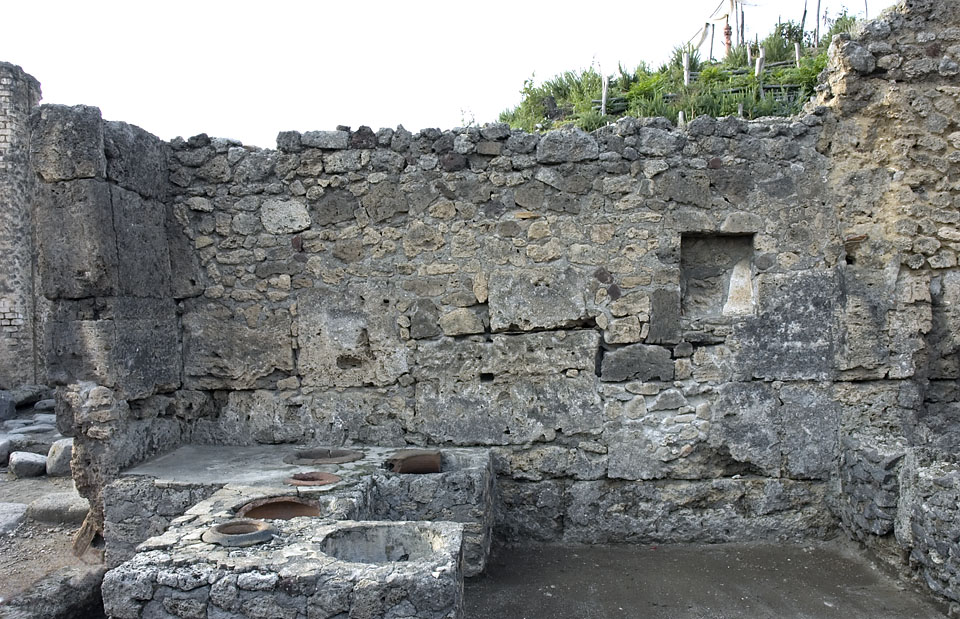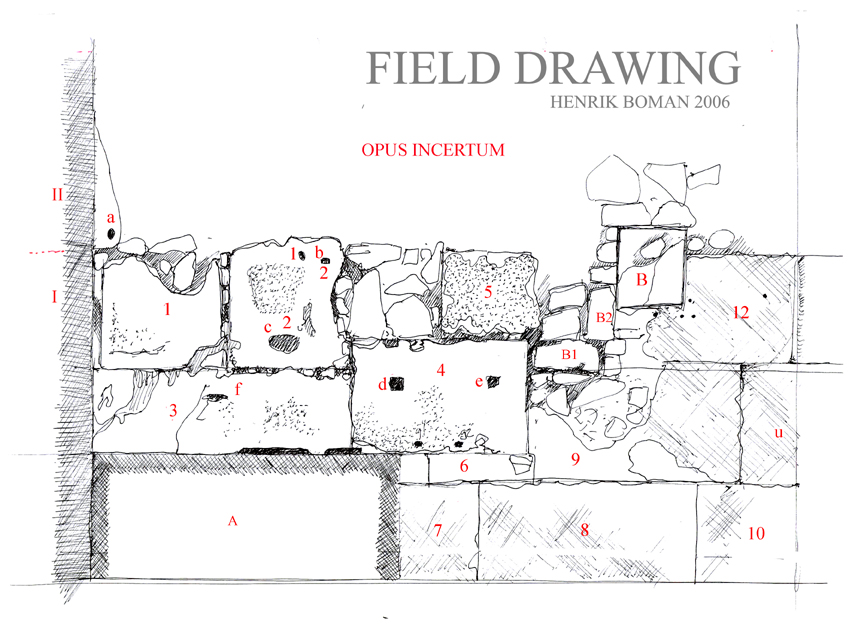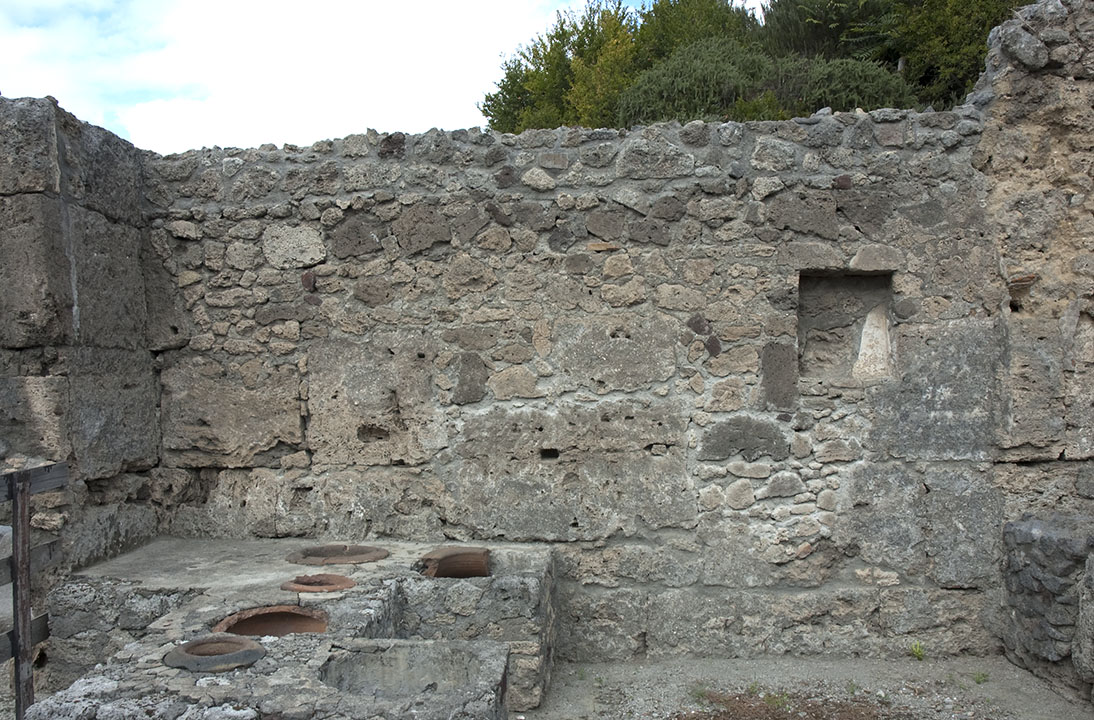North Wall
Description
Henrik Boman & Monika Nilsson
The wall is built in opus quadratum and opus incertum, with a straight and clearly defined line between the two techniques. The niche (B) extends over both areas of the wall, though the west side of the niche is built in smaller stones (B1-B2).
Opus quadratum
The lower part of the wall is constructed in opus quadratum. Two rows of ashlars are visible above present ground level, so is the top of a third row whereas a fourth is buried below floor and street level.
The joints of the stones in the lower part of the wall are fine, while the joints in, especially, the western area, are wider and less well executed. As discussed in numerous places, this could be the result of earthquakes, ancient as well as modern. The wall was severely damaged by the earthquake in 1980, though no documentation of the damage exists to our knowledge.
The line of the upper stones towards the incertum wall is less well defined in the western part of the wall than in the rooms in the rear of V 1,13 (rooms b, e and d). The ashlars do not follow a continuously straight upper line of the opus quadratum wall, though the line that the blocks adapts to along the north wall is still traceable at intervals. The W end of the opus quadratum wall is higher, and adapts to the western façade in opus quadratum. One area in the ashlar wall is built in opus incertum, and some of the blocks are smaller (5, 6), while one appears damaged (9) with presumable remains of ancient repairs.
Opus incertum — the upper wall
The upper part of the wall is built in limestone incertum, with a few cruma. The stones are of medium size, but a few large stones are used in an area above the niche (B), continuing at the same level along the wall.
Mortar: The mortar in the opus incertum wall is grey, with large black and white inclusions. It is significantly different to the yellowish mortar in room b and the boundary between the mortar types is visible in line with the eastern wall of room a. The yellow type could correspond to the building sequence or constitute a modern repair. The latter is unlikely, but not excluded, as we have found the yellow mortar on other locations — in the S wall of the bakery — could this be the result of rebuilding or destruction repairs?
Plaster: Large areas of fragmented plaster are found on the lower part of the wall, but none on the incertum wall. Plaster is preserved behind the counter, though fragmentary. All remains are UP, no fine plaster has been preserved except in the niche.
State of preservation: Mau observed cuttings for shelves and two slit windows (finestra strombata?). Two cuttings (d, e) that could correspond to the shelves observed by Mau are still visible, though one of the cuttings has today a stone inserted that looks intentional. No traces of the windows are visible today.



